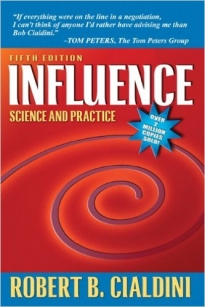Buried Secrets: Rememberance of Things Past, a Review by Christopher Perez
Buried Secrets: Rememberance of Things Past, a Review by Christopher Perez
Savi McKenzie-Smith, a child, adolescent, and adult psychotherapist, takes time in her book, Buried Secrets: Rememberance of Things Past – Learning to Live with Those Unwelcome Feelings, to lend h... / more
The Coddling of the American Mind, reviewed by Dylan Selterman
The Coddling of the American Mind, reviewed by Dylan Selterman
In their new book, The Coddling of the American Mind, Greg Lukianoff and Jonathan Haidt are sounding an alarm about a rising trend of emotional fragility in American culture. Specifically, they explain how this fragility manifests on university and college campuses, to the detriment of learning, academic freedom, discourse, and debate. The Coddling is an important and timely book, as our society is dealing with extremely challenging problems, and we will...
/ moreMy Year of Rest and Relaxation, reviewed by Andrew Archer
My Year of Rest and Relaxation, reviewed by Andrew Archer
“There she is, a human being, diving into the unknown, and she is wide awake.” (p. 289)
A Buddhist Analysis of My Year of Rest and Relaxation by Ottessa Moshfegh
Ottessa Moshfegh’s 2018 novel—My Year of Rest and Relaxation—is written as a retrospective, reflection of the narrator’s former self. The characters and details of the story are a critique of Western psychology—including psychiatry—and American culture. Buddhist philosophy is applied to analyze the narrator’s mission... / moreThe Quelling, reviewed by Katharine Coldiron
The Quelling, reviewed by Katharine Coldiron
Debut Novel Explores and Explodes Attachment Therapy
Barbara Barrow’s intriguing new novel, The Quelling (Lanternfish Press, September 25) explores a psychological treatment called attachment therapy. Although this innocuous name connects to attachment theory, which is legitimate, attachment therapy is controversial and dangerous, as the novel demonstrates ably. In The Quelling, two sisters, Addie and Dorian, are placed in a treatment facility as children and forced to...
/ moreThe Hope Circuit, Reviewed by Joe Smith
The Hope Circuit, Reviewed by Joe Smith
The Hope Circuit by Martin Seligman
Review by Joe Smith
Introduction
Martin Seligman is one of the best-known and most influential psychologists in the world. He is also something of a celebrity, central to the development of popular psychology and its incursion into the self-help publishing genre. Seligman is most famous today for fathering positive psychology, which celebrates 20 years of...
/ moreSocial Psychology: Revisiting the Classics (2nd Edition)
Social Psychology: Revisiting the Classics (2nd Edition)
Human consciousness can be blessing or a curse as it often impels us into self-examination. Hence, people wonder what makes them and others tick? How their attitudes are shaped? How great leaders are made? How does prejudice develop, and how can it be overcome? And the questions can go on and on. Social interactions are complicated and their impact on the individual is profound. Therefore, understanding the social context that motivates behavior becomes necessary to fathom. Social psychology... / more
The Runaway Species: How Human Creativity Remakes The World
The Runaway Species: How Human Creativity Remakes The World
Defining creativity can provide us with the necessary frame of reference to develop better understanding of what creativity is, and its impact on innovation and humanity. It is often assumed that a new product or a new idea reflects originality, but does it? ... / more
Moral Disengagement: How People Do Harm and Live With Themselves
Moral Disengagement: How People Do Harm and Live With Themselves
We all know popular cases of people who became known for their immoral behavior: Think of Lance Armstrong, professional cyclist and seven-time-winner of the Tour de France, convicted for doping. Or the Abu Ghraib prison guards, soldiers of the U.S. army, who took photos while humiliating and abusing Iraqi prisoners under their protection. These, of course, are prominent examples that come readily to mind. However, immoral behavior also happens on the “smaller scale”: Every day, people commit tax fraud,... / more
Influence: Science and Practice (5th ed)
Influence: Science and Practice (5th ed)
“Over 2 million copies sold!” The cover says it all. No, not about the popularity and prominence of the Influence: Science and Practice, but rather about the subtle ways in which our attitudes, behaviors, and perceptions of value can be manipulated by people who have knowledge of what Robert Cialdini calls “the weapons of influence.” According to Cialdini, a Distinguished Professor of Psychology at Arizona State University and a legendary figure in... / more
Mind: A Journey to The Heart of Being Human
Mind: A Journey to The Heart of Being Human
What is mind? Is it brain activity resulting in consciousness? Are mind and consciousness synonymous with each other? Is self-awareness an illness that leads to despair, or is physicality a curse that creates the delusion of separateness leading to alienation and melancholy? Defining the mind might... / more










